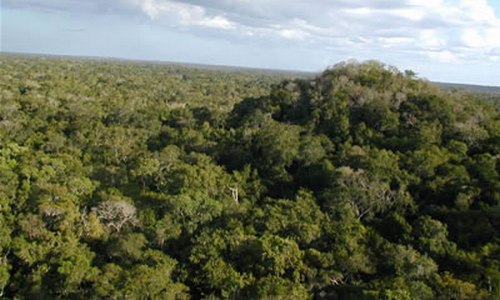Vagabondish is reader-supported. When you buy through links on our site, we may earn a small affiliate commission. Read our disclosure.
You can move backwards through Mayan history and, as long as you stay on this side of the 4th century, we still have a decent idea of what life was like. But go much beyond that and things begin to get pretty muddy pretty fast. For the era during which the early Mayan city of El Mirador flourished – the 6th century BCE to the 1st century – we know almost nothing. Or at least we knew almost nothing before some recent excavations.
We’re embedding a 3 minute CNN video on those ongoing excavations. The segment details two different but related archaeological efforts underway in the Mirador Basin, a 600,000 region that contains the area’s only remaining rain forest (everything else has been destroyed by loggers or drug traffickers or developers or all three). The first deals with the overarching work being done to uncover and preserve the Basin’s lost early-Mayan cities and pyramids, among them the Danta Temple that by some calculations is the world’s largest by volume.
The second effort focuses on work that’s much more specific to El Mirado. It has to do with the discovery of a frieze detailing the Mayan Creation Story, a part of the later and extremely important Popol Vuh manuscript. The Popol Vuh is one of only a handful of extant texts we have detailing Mesoamerican mythologies and there have been vociferous debates over its contents. What they’ve uncovered now blows that debate wide open, suggesting a pan-Mayan civilization that goes back thousands of years before the construction of better-known structures and cities. Neat.



